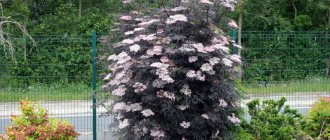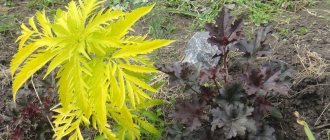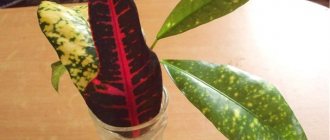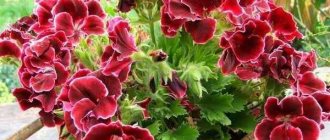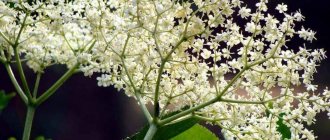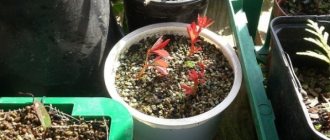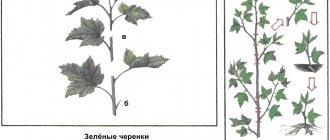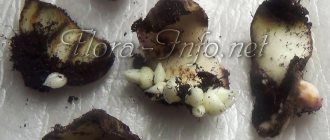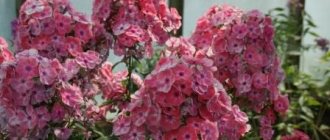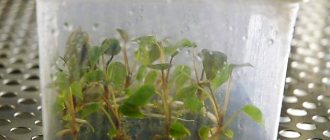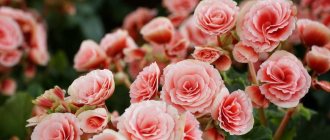A large deciduous shrub or tree with dark, glossy berries, black elderberry, planting and caring for which is not difficult, captivates with its decorativeness and at the same time the ability to obtain an edible harvest.
Jams and preserves are made from the fruits, and tea is brewed from the inflorescences. The healing properties of the plant have long been used in folk medicine. Fresh berry juice is a powerful natural coloring agent used in the food industry and winemaking. In this regard, the cultivation of entire elderberry gardens takes place. The knowledge gained from the article about the characteristics of reproduction, proper feeding, pruning and watering, pest and disease control will allow you to successfully grow an unpretentious beauty on your site.
Varieties
Sambucus nigra is known to many as a large bush, although it can grow as a 3-4 meter tree, reaching more than 7 meters in height over 60 years of life. Found in the wild. The leaves are odd-pinnate, oval, rich green in color, and have an unpleasant odor when rubbed. Elderberry flowers are small, white with a cream tint, collected in a corymb inflorescence. Flowering occurs in early June and lasts 3 weeks. The sweet and sour fruits, ripening in September, are juicy blue-black berries with 2-4 seeds.
photo: © Willow
The medicinal properties of elderberry are manifested in its anti-inflammatory, antibacterial, diaphoretic and diuretic effects. The healing raw materials are the inflorescences, fruits, bark and leaves of the plant. Of the 40 known species of Sambucus (Sambucus is the Latin name of the genus), the most widely known are black elderberry and red elderberry, with the former having an advantage due to the edibility of its berries. All other fruits are poisonous.
photo: © waysidegardens.com
The development of new varieties of elderberry is aimed at increasing its decorative value. Interesting variegated forms:
- Pulveruienta with white marble pattern;
- Aureomarginata with golden leaf margin;
- Madonna with yellow spots on leaves
The Purpurea variety has an unusual purple leaf color, and the Guincho Purpie variety, which has the same leaf color, changes it to fiery red in the fall. The Garda and Black Beauty varieties are delightful with soft pink inflorescences in spring and purple-bargy leaves in autumn.
photo: © alberaturedagiardinofastigiata.it
The Black Lance Elderberry variety, also known as Eva, is widely popular. It forms a beautiful openwork dome-shaped crown more than 3 meters high. Although Witches Broom does not bloom, this dwarf variety does not grow higher than 20 cm, which makes it possible to use it to create rock gardens.
photo: © crocus.co.uk
A special group includes varieties of Austrian and Dutch selection, which are famous for the fertility and indestructibility of their berries: Hamburg, Sambu, Corsair, Danau. The American variety Adam Eldercarry is capable of yielding up to 10 kg per bush. Only the domestic “Cossack” can compare with it.
Health risks, side effects and contraindications
While elderberry has some promising potential properties, there are also some dangers associated with its consumption.
The bark, unripe berries, and seeds contain small amounts of substances called lectins, which can cause stomach problems if consumed in excess (2).
In addition, elderberry contains substances called cyanogenic glycosides, which in some cases can release cyanide. It is a toxin also found in apricot seeds and almonds (1, 34).
100 grams of fresh black elderberries contain 3 mg of cyanide, and 100 grams of fresh leaves contain 3-17 mg. This is only 3% of the estimated lethal dose for a 60 kg person (2, 35).
However, commercial preparations and cooked berries do not contain cyanide, so there are no reports of deaths from their consumption. People who eat raw elderberry berries, leaves, bark, or roots may experience symptoms such as nausea, vomiting, and diarrhea (2).
There is one report of eight people becoming ill after drinking juice from freshly picked elderberries. They experienced symptoms such as nausea, vomiting, weakness, dizziness, numbness and stupor (36).
Fortunately, the toxic substances found in berries can be safely removed by cooking. However, branches, bark or leaves should not be used in cooking or sap (2).
If you pick your own flowers or berries, make sure you pick American or European elderberry, as other types of elderberry may be more toxic. Also, be sure to remove any bark or leaves before use.
Elderberry is contraindicated in children and adolescents under the age of 18, pregnant or lactating women. Although no adverse events were reported in these groups, there is not enough data to confirm that black elderberries are safe (2).
Summary:
The raw berries, leaves, bark and roots of the elderberry plant contain the chemicals lectin and cyanide, which can cause nausea, vomiting and diarrhea. Cooking the berries and seeds will remove the cyanide.
Preparing for landing.
You can plant black elderberry in open ground both in spring and autumn. Spring planting eliminates the possibility of freezing if the winter turns out to be harsh. Propagation by seeds involves winter sowing. Seedlings that emerge in the spring grow up to 50 cm in a year and are ready for planting in a permanent place.
photo: © granadanativegarden.org
A well-lit area with fertile, slightly acidic soil is ideal for planting elderberries. However, not every gardener can afford such a luxury. Elderberry is not capricious: partial shade will not become a serious growth limiter, and the lack of nutrients can be compensated by well filling the soil with organic matter during planting, as well as by annual spring fertilizing. Liming allows you to reduce soil acidity to an optimal level of PH 6-6.5. You just need to do it at least a month before planting the elderberries, or better yet, six months. Soddy-podzolic soil or loam is optimal for planting.
photo: © pukkaherbs.com
It is known that the smell of elderberry repels flies and other harmful insects, so it is advisable to grow it near toilets, cesspools and compost pits. By planting shrubs near the terrace, you can significantly reduce the number of mosquitoes in this area.
Diseases and pests of elderberry
All varieties of elderberry have one common feature: they release special aromatic substances into the environment. These secretions prevent the attack of small rodents and insect pests on the plant itself, as well as on the plantings located near it. The shrub is distinguished by its vitality and endurance, and it rarely gets sick. It easily gets along with a wide variety of crops and fits well with coniferous and deciduous trees. To prevent diseases and pests, it is recommended to periodically spray with insecticides. The optimal time for preventive treatment of shrubs is early spring and autumn, after the flowering process has completed. For this, a solution of copper sulfate or karbofos can be used.
Planting black elderberry provides decoration for a personal plot and provides versatile use of the fruits and parts of a valuable plant. Growing and caring for shrubs is simple; propagation occurs in several ways, so you can choose the most suitable one. Decoctions and infusions of elderberries help people cope with many diseases.
Loading…
Landing
Regardless of how you plant black elderberry in spring or autumn, it is better to dig a hole 40-50 cm deep in advance. The top, most fertile soil layer is subsequently used to cover the roots that are at the bottom of the planting hole. First, 7-8 kg of organic matter, 50 g of phosphorus fertilizers and 50-30 g of potassium fertilizers are added there. When all this settles under the influence of natural processes, the roots of the planted plant will have the best contact with the soil. It is important that when planting the root collar remains above the surface of the ground. If you plan to grow a tree-like form, then you need to immediately take care of the support. Until the plant takes root in its new location, it is provided with regular watering.
Care
The main elements of caring for black elderberry are:
- watering;
- feeding;
- trimmings;
- weeding and loosening
The plant is not very demanding of moisture and can grow in conditions of short-term drought, but in dry summers it cannot be done without watering. One bucket of water under the bush will be enough for a week of hydration. It is better to fertilize in early spring. The introduction of nitrogen promotes the active growth of vegetative mass. The plant is most responsive to urea. Solid fertilizers are embedded in the soil to a depth of 10-12 cm, liquid fertilizers are applied with watering.
“For organic matter, you can use solid manure, compost or an infusion of bird droppings.”
Elderberry pruning is carried out in order to give the plant the desired shape, its rejuvenation and healing. Formative pruning can be carried out at any time during the growing season. In the spring, pruning is needed to remove frozen and winter-damaged branches. The same procedure can be carried out in the fall.
The largest number of fruiting ovaries is formed on 2-3 year old branches; over time, their number decreases, and by the age of six they stop bearing fruit altogether. Therefore, it is recommended to remove old elderberry branches. Once every three years, for the purpose of rejuvenation, the above-ground part is cut off so that only 10-centimeter stumps remain, which are covered with garden pitch. Over the summer, new shoots grow, and the bush is transformed.
Weeding and loosening of the tree trunk circle is favorable for the development of elderberry. To prevent the reappearance of weeds, as well as to maintain optimal soil moisture for a long time, mulching is an excellent technique. For these purposes, you can use dry grass, chopped bark or sawdust.
How to plant elderberries correctly
To get a strong, beautiful plant, you need to know how to plant elderberries correctly. The shrub is not particularly picky about the soil on which it grows, but preference should be given to loam and soddy-podzolic soil with a pH of 6.0-6.5. Excessive soil acidity is neutralized by liming (dolomite flour is added).
The plant can tolerate excessive humidity and moderate shade, but it definitely cannot withstand drought - it grows poorly, loses its decorative effect, and can even die. This must be taken into account when choosing a place for planting and during further care.
It is recommended to focus on the open, sunny, eastern area of the site. A well-groomed elderberry bush planted in a suitable place looks very chic, look at the photo:
Shrubs are planted in autumn or spring, depending on the method of propagation. In any case, the hole is dug in advance (a month before the intended planting). The depth of the pit is 0.8 m and its circumference is 0.5 m. Earth from the upper layers of the ditch is thrown in one direction, and from deeper layers in the other.
A nutrient “cushion” is placed at the bottom of the trench, consisting of the following components:
- soil excavated from the surface layers;
- 7 kg of high-quality humus;
- 50 gr. phosphates;
- 30 gr. potassium fertilizer.
All ingredients are thoroughly mixed. Cover 2/3 of the mixture with the bottom of the dug hole. On the day of planting, the inside of the trench is slightly loosened, the root part of the seedling is lowered into it, and sprinkled with soil previously extracted from the lower layers. Cover the top with the remainder of the fertilizer soil mixture. Compact the area around the trunk and water it with water (1-15 l). When the liquid is absorbed, the seedling is carefully tied to a peg.
For some basic stages of planting black elderberry and caring for it in the future, see the photo:
Although the plant is unpretentious, it still needs to be given some attention, otherwise the shrub will not be able to fulfill its decorative functions.
The nature and scope of care activities depends on the season:
- Spring. In March, there is a risk that the plant will suffer from temperature changes, when during the day the bark is strongly heated by the sun's rays and rapidly cools at night. To prevent damage, all forks are painted with lime mortar. If there are cracks or injuries caused by rodents on the trunk, then all such “wounds” should be washed with a solution of potassium permanganate and covered with garden varnish. On a fine, non-cold day, begin pruning. Dried, unhealthy, frostbitten shoots must be eliminated. Using pruners, the crown is given a neat appearance. The cuts and cut areas are treated with Nitrafen or Bordeaux mixture.
- Summer. After flowering, elderberries are sprayed with special preparations to prevent damage by harmful insects and powdery mildew. The soil in the tree trunk area is loosened and kept moist. In bushes that have been frostbitten during the winter, the growth of root shoots is activated. They are destroyed until they “overtake” the elderberry bush itself.
- Autumn. Autumn care involves watering, harvesting, and preparing for winter. In September, the medicinal berries of the black elderberry ripen, they are harvested and subjected to appropriate processing. After this, sanitary pruning is performed. When the plant loses its leaves, it is treated with fungicides and insecticides. At the end of the month, they dig up the soil around the trunk and insulate the area near the trunk with peat, humus or straw. Sometimes fertilizers are applied first.
- Winter. To prevent frostbite at the root part of the bush, snow is periodically piled up around the trunks. They also make sure that the insulating mulch does not collapse.
Varieties of all types of elderberry need sufficient water: black, red, Canadian and others. The frequency of watering can be reduced or even eliminated only in rainy summers and when the tree trunk area is mulched. Mulch (compost, straw, rotted manure) slows down the rate of evaporation of moisture from the soil. During particularly hot seasons, 10 liters of water are poured under each bush, once a week.
Reproduction methods
Elderberry can be propagated by:
- seeds;
- cuttings;
- layering;
- dividing the bush
For anyone who knows in practice how to grow a perennial plant from seeds, such propagation of elderberry will not be difficult. To obtain seed material, large ripe berries that have reached physiological ripeness are selected. Usually this period is the end of September - October. Due to the rapid loss of germination, the seeds separated from the pulp are immediately sown in the soil to a depth of 2-2.5 cm. You can use a self-prepared substrate from humus, turf, peat and sand (2:2:1:1). The shoots that emerge in the spring will grow over the summer and, having overwintered again, will be ready for planting in a permanent place.
For propagating elderberry by cuttings, the material can be of two types. Green cuttings are cut in summer in July. It is desirable that they have a heel of at least 10 cm, two leaves, the plates of which are trimmed by 2/3, and two internodes. They are planted in a greenhouse with well-soaked soil. Lignified cuttings are harvested in the fall and stored in a cool place until spring. Planting is carried out in the spring according to the same principle as for green cuttings. By autumn the material takes root. It needs to be covered for the winter so that in the spring you can work with the finished seedlings.
Layerings for propagation of shrubs are obtained by bending branches to the ground and fixing their central part in the soil. To do this, in the fall the necessary grooves are dug to fix the selected branches in them; the tops remain above the ground. In spring, rooted elderberry cuttings can be separated from the mother plant.
Dividing the bush is recognized as the fastest and most effective propagation method. It is used when there is a sufficient number of young shoots. To divide the bush, you will most likely have to resort to using an ax. Wounds obtained during manipulation are treated with charcoal or garden pitch.
photo: © waysidegardens.com
Description of the bush
The plant can be found in the Northern Hemisphere, where temperate and subtropical climates predominate, as well as on the Australian continent. Its qualities have been known since ancient times. For the ancient Greeks, the plant was a material for making musical instruments. It is believed that the Latin name came precisely from the eastern instrument sambuca. For many peoples, elderberry is sacred and helps protect the house from evil spirits. Elderberry, which is popular among people, also has popular names: sambuca, elderberry blossom, buzovnik, pishchalnik and wasteland. Black elderberry is the most beneficial species for humans. To grow, plant and care for it, no special skills are required, and the garden will acquire an unusual, chic look. The black elderberry plant comes in two types:
- bush;
- a low tree whose height ranges from 2 to 6 meters.
Black elderberry needs a description. Remember that at certain times it can easily be confused with the red variety of elderberry. Therefore, wait until the berries are completely ripe. The branched stems have a white porous core, covered with a thin woody shell, which is green on young branches; later the shade changes to brownish-gray. The leaves, located opposite on the roots, have an elongated, pointed shape. Their length ranges from 10 to 30 cm. Multi-flowered flat inflorescences reach a diameter of 25 cm. The flowers of the plant have a cream or dirty yellow hue and emit a pleasant aroma. The period of the beginning of flowering is May - early June. The berries, reaching a diameter of 7 mm, have dark red flesh and several seeds. The fruits ripen in late August - early September, at which time they become almost black.
People appreciated the tree. Elderberry fruits contain many substances beneficial to human health, such as:
- glucose;
- carotene;
- vitamin C;
- fructose;
- potassium;
- amino acids;
- tannins.
Pest Control
Infestation of a shrub by pests can be detected by the characteristic curling of the leaves. This is usually an aphid or spider mite. Other pests are also known: the tailed moth, the elderberry leaf miner, and the leaf mite. At the first signs of damage, the entire plant should be treated with a suitable insecticide; it is important not to waste time. Voloton, karbofos, fufanon are suitable for this.
Supporters of natural methods of struggle can try to save the situation with an infusion of red pepper or onion skins.
Possible difficulties
Difficulties in cultivating elderberry can arise if you do not know the basic rules of agricultural technology for this crop. For example, planting in poor sandy soils or in areas with heavy shade can result in a lack of fruiting and even flowering. In each specific case, a solution can be found; fortunately, there are now enough opportunities to obtain the necessary information.
photo: © gardeningwithcharlie.com
Medicinal properties of elderberry
The plant was used as a medicinal plant in the Middle Ages for the treatment of many diseases. It is still popular in folk medicine today.
- The medicinal properties are as follows:
- diaphoretic;
- expectorant;
- diuretic;
- anti-inflammatory;
- for diseases of the cardiovascular system in older people;
- laxative;
- against burns;
- for joint diseases;
- antidiabetic.
Elderberry is not a panacea, but it can soften the course of any disease, enhance the effect of medications and tone the patient’s body.
Find out how black elderberry is used in oncology and whether it can be used to cure cancer.
Preparing for winter
Before going to winter, it will be useful for black elderberry to undergo sanitary pruning, which allows you to protect the plant from infections lurking in diseased and damaged parts. By October, the soil adjacent to the trunk is dug up. If the autumn was dry, it is useful to saturate the soil with the missing moisture. Treating the trunks with lime or chalk with the addition of an antiseptic will protect the bush from sunburn, diseases and pests.
PHOTO: © Lynn Coulter
By showing minimal care for such a familiar and at the same time interesting crop, it is so easy to fill your dacha corner with beautiful blooms in the spring, lush foliage in the summer and healthy fruits in the fall. And, perhaps, one summer evening, among the branches, the mother elderberry that the great storyteller once saw will smile at you.
Chemical composition of black elderberry
For medicinal purposes, parts of the entire plant are used, the composition of which is completely different.
The flowers contain: essential oil, carotene, organic acids, choline, glycosides, vitamin C, tannins, sugars, tannins.
The leaves contain a lot of vitamin C and carotene. Alkaloids, essential oil, resins, tannins, aldehydes and sambunigrin.
Phytosterols, essential oil, and choline were found in the bark.
Elderberry fruits include vitamins and micro- and macroelements.
Vitamins: • vitamins C, B12, B6 • niacin and thiamine • riboflavin • vitamins A and E • acids: folic and pantothenic
Minerals contain: • calcium • magnesium • iron • phosphorus • sodium • copper • zinc • selenium • potassium
